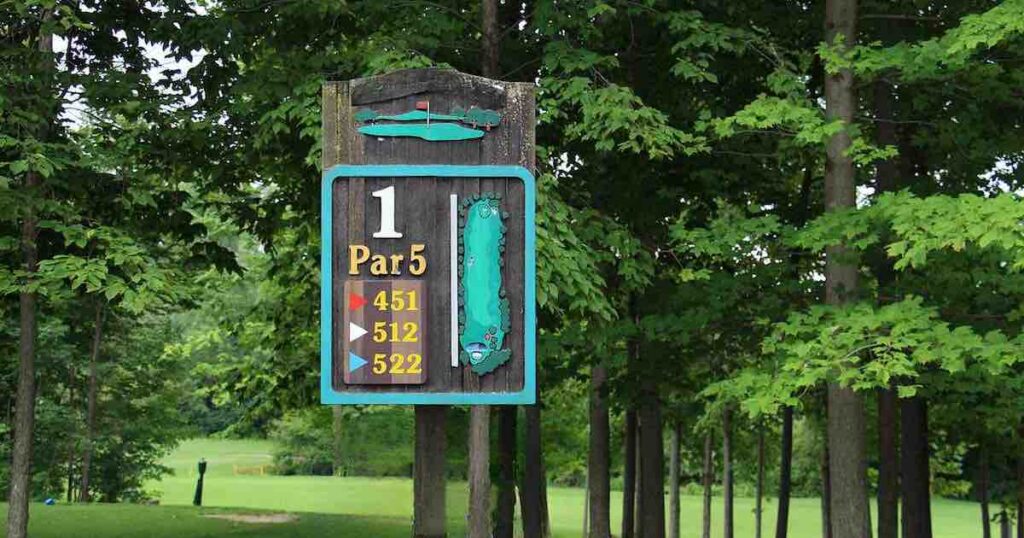The scoring system in golf is unique in the world of sport and can seem peculiar. What is a birdie in golf? What does Double Bogey mean exactly? We will do our best to explain that and more as we dive into how golf is scored.
The Basics of Golf Scoring

Unlike most sports, where a higher score is desirable, in golf, the goal is to have the lowest score possible. Scoring is based on the number of strokes a player takes to get their ball into the hole. Each hole on a golf course is assigned a certain number of strokes, known as ‘par,’ representing the standard score an experienced golfer is expected to make.
Strokes in Golf
What is Par?
Again, Par refers to the number of strokes a skilled golfer is expected to need to finish a hole or a round. It is the benchmark against which every player’s performance is measured. For example, a hole could be a Par 3, 4, or 5, implying that a golfer is expected to take 3, 4, or 5 shots to get the ball from the tee into the hole. If you play par golf, you usually only need the assigned amount of strokes and are a scratch golfer.
What is a Birdie in Golf?
A Birdie in golf refer to a score that is one stroke under Par. It is an indication of an above average performance on that hole. For example, if a hole is a Par 4 and the golfer only uses 3 strokes, that’s a birdie. Getting a birdie in golf is relatively uncommon for amateur golfers. Achieving this can be a significant highlight in a round of golf.
What is an Eagle in Golf?
An Eagle in golf refers to a score of two strokes under Par. Getting an Eagle in golf is quite an accomplishment, because it means the golfer completed the hole in significantly fewer strokes than expected. For most amateurs this occurs when they get a hole-in-one on a Par 3. But it can happen on a Par 5 when using two strokes to reach the green and only one putt. Both are rare feats for the average golfer and are definitely cause for celebration.

What is an Albatross or Double Eagle?
What is a Bogey in Golf?
What is a Double Bogey?
What is a Triple Bogey?
What is a Golf Handicap?
What is Match Play and How is it Different?
Keeping Score in Golf
- Keep a Scorecard or Use a Scoring App: Always have a scorecard or scoring app with you during a game. It allows you to track your scores hole by hole in real-time and is crucial in stroke play games. Today’s technology offers numerous golf scoring apps to help track your scores. These apps often come with extra features such as GPS and statistics tracking.
- Mark Scores After Each Hole: It’s easier and more accurate to mark your scores immediately after completing each hole rather than trying to recall them at the end of the game.
- Double-Check Your Scores: Mistakes can happen, so it’s always a good idea to double-check your scores at the end of the game.
Final Thoughts
In conclusion, understanding golf scoring is fundamental to the game. Not only do you now know what a birdie in golf is, but you are also up to speed on the formats of stroke play and match play, and how to keep score. So, for your next round, remember to have a scorecard or scoring app ready, mark strokes after each hole, and double-check your scores to ensure accuracy and integrity.
For more foundational golf information, head over to our Golf Basics section.



